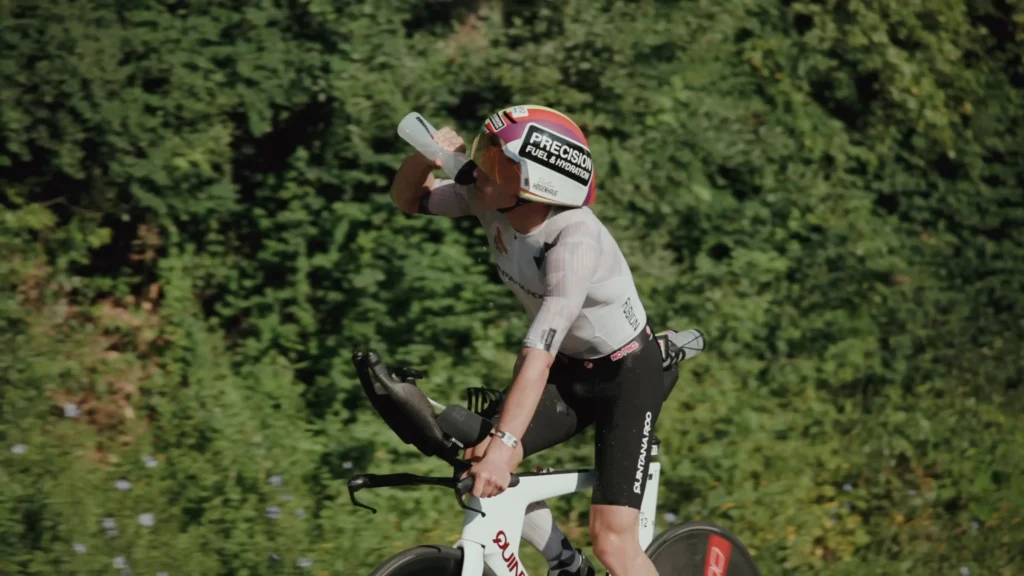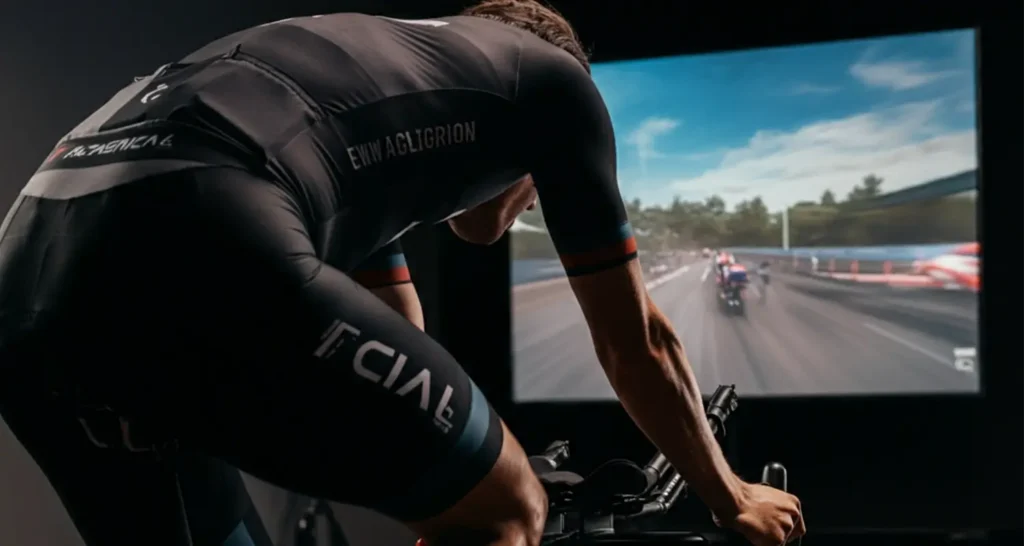
Triathlon Hydration: Your Complete Guide to Fluid and Electrolyte Mastery
You’re 35 km into the bike portion of your first Ironman, feeling strong and confident. The sun’s beating down, but you’re cruising along at your target pace. Then it hits you—when was the last time you actually drank anything? Your mouth feels like sandpaper, your legs are starting to cramp, and suddenly that finish line seems impossibly far away.
If you’ve been there, you’re not alone. Hydration mistakes have derailed more triathlon dreams than mechanical failures and missed alarm clocks combined. But here’s the thing—mastering your hydration strategy isn’t rocket science, it’s just science. And once you understand the fundamentals, you’ll never have to worry about bonking due to dehydration again.
Key Takeaways – Your Hydration Game Plan
- Start early: Begin hydrating 24-48 hours before race day, not just the morning of
- Know your numbers: Aim for 400-800ml per hour during the race, adjusted for your sweat rate
- Electrolytes matter: Target 1,000mg sodium per hour as your starting point
- Avoid the extremes: Both dehydration AND overhydration can ruin your race
- Practice, practice, practice: Never try new hydration strategies on race day
- Listen to your body: Pale yellow urine = you’re on track
Why Hydration Can Make or Break Your Race
Let’s be honest—when we’re in the thick of training, it’s easy to think hydration is just about not feeling thirsty. But your body is basically a sophisticated cooling and performance system, and water is its most critical component.
Here’s what happens when you get it right: Your body temperature stays regulated even when you’re pushing hard. Your muscles function smoothly without cramping. Your cardiovascular system delivers oxygen efficiently. Your brain stays sharp for those crucial tactical decisions in the final kilometers.
Get it wrong? Well, losing just 2% of your body weight through dehydration can tank your endurance performance by up to 25%. That’s the difference between a PR and a painful slog to the finish line.
The Silent Killer: Hyponatremia (dangerously low blood sodium) is actually more common in endurance events than severe dehydration. It happens when athletes drink too much plain water without replacing electrolytes. This condition can be life-threatening, so understanding the balance is crucial.
The Pre-Race Hydration Window: Starting Strong
I’ve learned this the hard way—race day hydration actually starts two days before you even see the start line. Think of it like loading your fuel tank before a long road trip.
“I remember my first half-Ironman. I was so focused on not having to stop for bathroom breaks that I barely drank anything the day before. By mile 8 of the run, I was seeing spots and walking more than running. Never again.” – Sarah, 3x Ironman finisher
Your 48-hour game plan:
Start sipping consistently 24-48 hours before race day. We’re not talking about forcing down gallons of water—that’ll just have you running to the bathroom every 20 minutes. Instead, include electrolyte-rich drinks with your regular fluid intake, especially if you’re racing in hot conditions.
Race morning deserves special attention. Continue sipping water with electrolytes up to 45-60 minutes before your swim start. This gives your kidneys time to process excess fluid while keeping you properly hydrated.
Pro Tip: Check your urine color throughout this period. Pale yellow is your target—it means you’re well-hydrated without being waterlogged. Dark yellow or infrequent urination? Time to step up your fluid game.
During the Race: Your Discipline-by-Discipline Strategy
Here’s where things get tactical. Each discipline presents unique hydration challenges, and your strategy needs to adapt accordingly.
| Discipline | Fluid Target | Electrolyte Strategy | Pro Tips |
|---|---|---|---|
| Swim | Pre-hydrate only | Sodium/potassium pre-race | Small sip before swim start |
| Bike | 400-800ml/hour | Sodium in every bottle | Adjust for sweat rate & conditions |
| Run | Small sips at aid stations | Salt tabs or sports drinks | Pour water on head/neck in heat |
The Bike: Your Hydration Sweet Spot
The bike leg is where you can really nail your hydration strategy. You’re not bouncing around like on the run, so drinking is easier. Plus, you’ve got storage options for multiple bottles.
Here’s your target: 400-800ml (14-27 oz) per hour. I know that’s a wide range, but here’s the thing—your needs depend on your size, fitness level, sweat rate, and environmental conditions. A 200-pound athlete crushing it in 90°F heat needs a lot more fluid than a 130-pound athlete on a cool, overcast day.
Find Your Personal Sweet Spot: During training, weigh yourself before and after long rides. For every pound lost, you need to replace about 16-24 oz of fluid. If you’re losing more than 2 pounds per hour, you need to increase your intake.
Electrolytes: The Unsung Heroes of Endurance
Water alone isn’t enough—you need to replace what you’re sweating out. When you sweat, you’re losing sodium, potassium, magnesium, and calcium. Ignore these, and you’re setting yourself up for cramping, fatigue, and potentially dangerous electrolyte imbalances.
Sodium is your primary concern. Start with 1,000mg per hour as your baseline, but this isn’t one-size-fits-all. Some athletes are “salty sweaters” who need significantly more. You’ll know if you’re one of them—you’ll see white residue on your clothing after hard workouts, and you’ll crave salty foods post-exercise.
Potassium, magnesium, and calcium play supporting roles in muscle function and nerve transmission. Many sports drinks and electrolyte supplements provide these in appropriate ratios.
Warning Signs of Electrolyte Imbalance: Watch for muscle cramps, dizziness, excessive fatigue, nausea, or headaches. These can indicate you’re either not getting enough electrolytes or you’re getting too much fluid without adequate sodium replacement.
The Run: Damage Control and Smart Choices
By the time you hit the run, you’re already dealing with accumulated fatigue and possibly some dehydration from the swim and bike. Your stomach might be a bit unsettled, making large volumes of fluid harder to tolerate.
This is where aid station strategy becomes crucial. Don’t wait until you’re thirsty—by then, you’re already behind. Take small sips at every aid station, even if you don’t feel like you need it.
In hot conditions, don’t forget the cooling aspect. Pouring water over your head and neck can help with thermoregulation, but remember—this doesn’t count toward your fluid intake.
Post-Race: The Recovery Window
Crossing the finish line doesn’t mean your hydration job is done. Your body needs to restore fluid balance and support muscle recovery.
The goal is to replace 150% of the weight you lost during the race. So if you lost 2 pounds, you need to consume about 48 oz of fluids over the next several hours. Combine this with carbohydrates and protein for optimal recovery.
Recovery Pro Tip: Sports drinks, chocolate milk, or electrolyte-rich recovery drinks are excellent choices. They provide both the fluids and nutrients your muscles need to start the repair process.
Common Mistakes That’ll Sink Your Race
I’ve seen (and made) these mistakes more times than I can count:
The “Race Day Experiment”: Never, ever try new hydration products on race day. Your gut is already stressed from the effort—don’t add unknowns to the mix.
The “One-Size-Fits-All” Trap: Your training buddy’s hydration strategy might be perfect for them and terrible for you. Factors like body size, sweat rate, fitness level, and even genetics affect your needs.
The “Plain Water” Mistake: Drinking only water during long efforts can lead to hyponatremia. Always include electrolytes in your hydration plan.
The “Weather Ignorance”: Hot, humid conditions dramatically increase your fluid and electrolyte needs. Cold weather doesn’t eliminate the need for hydration—you’re still losing fluids, just not as obviously.
Your Personalized Hydration Action Plan
Here’s how to create a hydration strategy that works for your body and your races:
Step 1: Know Your Sweat Rate
Weigh yourself before and after a hard one-hour workout. The difference (in pounds) × 16 = your hourly fluid loss in ounces. This is your baseline replacement need.
Step 2: Test Your Tolerance
During training, experiment with different volumes and types of fluids. Some athletes can handle 800ml per hour; others max out at 400ml. Find your comfort zone.
Step 3: Dial in Your Electrolyte Mix
Start with 1,000mg sodium per hour and adjust based on how you feel. If you’re still cramping or feeling fatigued, you might need more. If you’re feeling bloated or nauseous, back off slightly.
Step 4: Practice Race-Day Scenarios
Simulate race conditions during training. Practice drinking on the bike, grabbing cups at aid stations, and transitioning between disciplines while maintaining your hydration schedule.
Trusted Resources for Deeper Learning
Ready to Transform Your Hydration Game?
The difference between a good race and a great race often comes down to the details you master in training. Your hydration strategy is one of the most controllable factors in your performance equation.
Start with your next long workout. Implement one new hydration strategy from this guide. Track how you feel, how much you drink, and how your body responds. Build from there.
Have you experienced hydration disasters or discovered strategies that work amazing for you? Share your story in the comments below—your experience might be exactly what another athlete needs to hear.
Remember: Every elite triathlete started as a beginner who learned from their mistakes. Your breakthrough race is just one well-executed hydration plan away.

Pingback: Protein for Triathlon Recovery: Optimizing Muscle Repair - besttriathletes.com